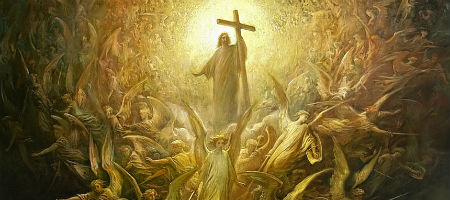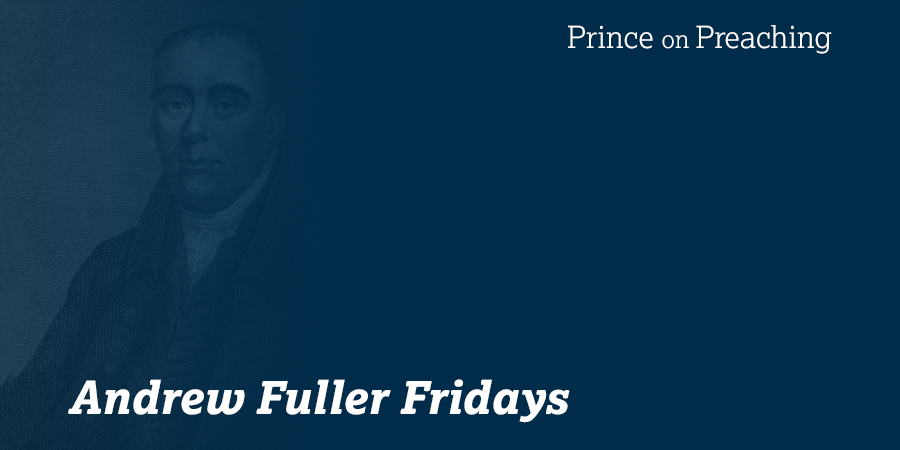
Among contemporary scholars, there is great reluctance to identify a theological center in Scripture. Viewed charitably, one might say that this results from the fear of forcing one’s own philosophical grid onto the text. More likely, one might conclude with Graeme Goldsworthy that this is “largely born of the empiricist approach, which even some evangelicals have come to accept” (Preaching the Whole Bible as Christian Scripture, 51). But, as Carl F. H. Henry states, “The very fact of disclosure by the one living God assures the comprehensive unity of divine revelation” (God, Revelation and Authority, 6 vols., 2:69). This comprehensive biblical unity is a unity of divine thought and message and is not constituted simply by canonicity. The diversity of Scripture is ultimately unified through divine authorship.
Graeme Goldsworthy has argued that finding a central unifying theological center of the biblical canon is possible and “that the kingdom of God is the controlling theme” of biblical theology. He contends,
It is the focus of both creation and redemption: God’s plan of redemption is to bring in a new creation. The entire biblical story, despite its great diversity of forms and foci, is consistent in its emphasis on the reign of God over his people in the environment he creates for them. The kingdom depicted in Eden is lost to humankind at the beginning of the biblical account. The history of redemption begins immediately after the kingdom is lost, and tells of the way the kingdom of God will finally be established as a new people of God in fellowship with him in a new Eden, a new Jerusalem, a new heaven and a new earth (“Kingdom of God,” in New Dictionary of Biblical Theology, 620).
William VanGemeren has also concluded that one can deduce a central theme in the canon. For VanGemeren, this is simply Jesus Christ:
The center of the Bible is the incarnate and glorified Christ, by whom all things will be renewed. All the acts of God, all the revelation of his promises and covenants, all the progression of his kingdom, and all the benefits of salvation are in Christ.
All the acts and blessings of God in any age are thus based on the death of the Christ in anticipation of the new age. . . . This message is considered to be Christological in the sense that the whole of the Bible (both Old and New Testament) focuses on Jesus the Messiah, who will restore all things to the Godhead (The Progress of Redemption, 27, 32).
The approaches of Goldsworthy and VanGemeren are correct as far as they go. The theme of the kingdom of God is a good starting point for thinking about the theological center of Scripture. Nevertheless, more can be said for clarity. The concept of the kingdom of Christ provides the eschatological orientation the George Eldon Ladd alluded to in his definition of the kingdom of God but never fully developed. Ladd’s definition of the kingdom demands a Christological focus: “Thus the kingdom is seen to be a single concept, the rule of God, which manifests itself in a progressive way and in more than one realm. It is God’s saving will in action
Likewise, saying that Jesus Christ is the central theme of the Bible (as VanGemeren does) is fully accurate only when it is understood in the context of what Jesus has done and will do. As D. A. Carson has observed, “One might say that the center of NT theology is Jesus Christ, but although at one level that is saying everything at another level it is saying almost nothing” (“New Testament Theology,” in Dictionary of the Later New Testament and its Developments, 810). From the beginning to the end, the Scripture speaks about the kingdom, but one can fully understand the kingdom only in light of Christ. Genesis 3:15, introduces kingdom conflict from the beginning but immediately counters with the promise of the seed of woman. In the end (Rev 11:15), loud voices declare, “The kingdom of the world has become the kingdom of our Lord and of His Christ; and He will reign forever and ever.”
The critique here of VanGemeren’s use of the simple designation “Jesus Christ” for the central, unifying, theological center of Scripture is similar to the critique Goldsworthy offers against simply suggesting the designation “God” for the central, unifying, theological center. Goldsworthy writes, “To propose God is the controlling theme is bland because “God” is a three-letter word without specific content. God is revealed through his saving work and words” (Preaching the Whole Bible, 51).
It must be stated that when Goldsworthy explains his understanding of the “kingdom of God” as the controlling theological theme of Scripture, a focus on Jesus Christ is not neglected, and when VanGemeren explains what he means by “Jesus Christ” being the central theological center of Scripture, progressive eschatological kingdom purposes are not neglected. It also should be noted that to confess Jesus as the “Christ” implies the presence of the kingdom because the mission of the Messiah was to bring the kingdom to men. The concern of this author is that neither designation as a title or as a heading for the central unifying theological center of Scripture is as clarifying as the designation kingdom of Christ.
Thus, my proposal is that the designations suggested by Goldsworthy and VanGemeren be combined: the kingdom of God in Christ—or, more simply stated—the kingdom of Christ. This terminology retains the kingdom focus that Goldsworthy notes “is all-encompassing in the sense that, while there is a reality outside of the kingdom, all reality is understood in relationship to the kingdom”; but it does not fail to note the progression of redemptive history toward the kingship of Christ, heir to the throne of David, the one in whom “all the promises of God find their yes (2 Sam 7:12-13, 2 Cor 1:20)” (Preaching the Whole Bible, 52).
The kingdom of Christ is not a novel designation (John 18:36-37, Col 1:13, Eph 5:5, 2 Pet 1:11, Rev 11:15). The Old Testament points to the reign of the messianic king, and the message of the eschatological kingdom of Christ is woven into the New Testament. George Eldon Ladd references this Christological understanding of the kingdom when he writes, “The Kingdom of God is at the same time the Kingdom of Christ (Eph. 5:5); for the Kingdom of God, the redemptive reign of God, is manifested among men through the person of Christ, and it is Christ who must reign until He has put all His enemies under His feet (1 Cor. 15:25)” (The Gospel of the Kingdom, 115).
All other proposed centers, such as kingdom, covenant, promise, lordship, salvation, and righteousness converge in the kingdom of Christ. To put it another way, every road in the Bible leads to the kingdom of Christ. Some roads are narrow; the path is hard to see; and it is difficult even to stay on the road. Others are expressways with the kingdom of Christ always in the skyline. But every road ends there. Therefore, every sermon must be preached with the kingdom of Christ in sight.




